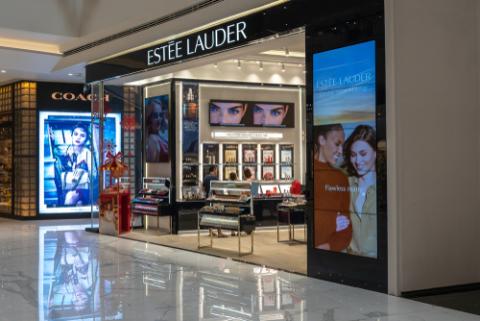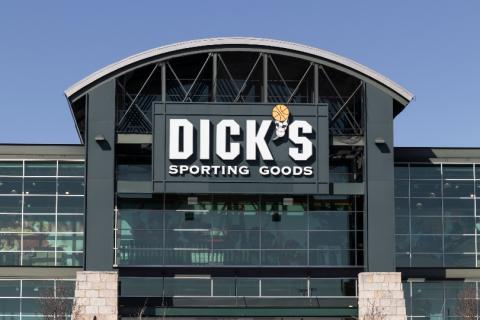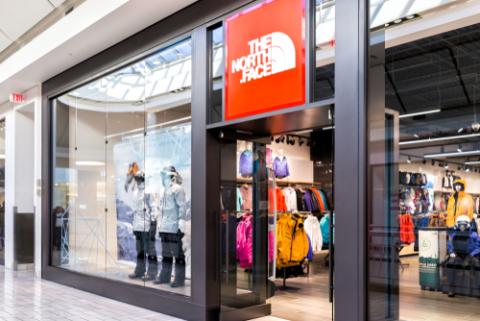Top 10 Specialty Retailers of 2023

What makes specialty retailers special? It’s their mastery of the niche. And while each has their own unique focus, offering exceptional products and experiences to customers remains critical to their success.
For the sixth consecutive year, RIS has collaborated with wRatings to rank the industry’s top performing retailers. We’ve highlighted the top 100 companies that are continuing to prosper despite the ongoing volatility, analyzing their percentage of market share and how it translates to overall sales and where these companies are investing to maintain their competitive edge. The Top 10 alone totals $2.4 trillion in sales — besting last year’s $2.3 trillion.
Below RIS breaks out the Top 10 Specialty Retailers from the full Top 100 list. Each has demonstrated innovative strategies or unique operational approaches to stay ahead of the competition — whether through enhanced customer experiences, creating memorable moments, these retailers have set themselves apart in the market.

1. Nike
No. 13 overall, 1.41% market share
Paying tribute to basketball culture and taking advantage of its massive Jordan fan base Nike recently opened a store in Japan that exclusively features the brand. The 9,200 World of Flight Shibuya store includes experiential features including a content studio where consumers can film unboxings and reviews and share videos across social channels, a workshop space where they can access educational tutorials on shoe lacing, care and preservation and much more. The company is also bolstering its digital efforts via a pilot program by adding new capabilities to its sports apps, Nike Run Club and Nike Training Club, and has made major changes to its leadership structure, shuffling positions to better support the enterprise across various business areas, most notably supply chain and consumer engagement.
2. TJX Companies
No. 14 overall, 1.39% market share
With a mantra of “never the same store twice,” TJX Companies leans in on being the top global off-price retailer — a model especially successful during times of economic uncertainty. “By staying focused on our off-price fundamentals, which have served us well through many kinds of retail and macro environments, we continued to bring customers around the world exciting values and a treasure-hunt shopping experience, every day," CEO and president of The TJX Companies Ernie Herrman explained during an EOY earnings call.

3. Best Buy
No. 15 overall with 1.29% market share
One of Best Buy’s most notable moves recently, was testing new store models to meet the ever-changing needs of consumers. It opened its first small-format, digital-first store, a 5,000-square-foot store establishment in Monroe, NC. Inside, consumers could find easy access to services like Geek Squad, along with an assortment of specially curated products and new ways to pick up tech. The twist? The model encourages consumers to do everything from shop and get tech advice digitally while in the store via augmented reality and interactive displays, for example. This immersive experience increased both sales and customer satisfaction.
4. Sherwin-Williams
No. 24 overall, .62% market share
Sherwin-Williams was recently named a most responsible retailer — perhaps not surprising given the company’s investment in R&D. The renowned provider of paints and coatings, has cemented its position as an industry leader through continuous innovation. It kicked off a “Building Our Future project” back in 2021 and has made significant progress in construction of a 600,000 square-foot R&D facility, which will bring chemists, engineers, technicians and support teams together into a state-of-the-art hub for innovation and development of future products and services. The new R&D Center will support product development, coatings research, color technology and process engineering.

5. Estee Lauder
No. 30 overall, .45% market share
Pradipta Saha, executive director of digital supply chain at Estée Lauder, recently said that, in order to best serve customers, you need to ask: “What is the end-to-end impact of everything you do?” The company is working to improve analytics capabilities, emphasizing that supply chain priorities must now be more geared toward resilience, supply visibility and, at the core, getting away from functional silos to see everything from the lens of the consumer. Insight will help further the company’s commitment to creating the next generation of breakthrough prestige beauty products.
6. The Gap
No. 31 overall, .43% market share
The retailer – which includes brands Old Navy, Gap, Banana Republic, and Athleta – recently invested in an exchanges and returns platform. The new technology also offers fraud-protected customer keep and drop-off locations to facilitate online and offline returns and exchanges. Gap hopes the new returns and exchanges portal, which integrates with its existing retail systems, will slash the number of items sent back to the store. “Optimizing the returns process is a key lever to maintain a great shopping experience and support customer loyalty,” said Kevin Kuntz, senior vice president of global logistics fulfillment. On the front end, the platform encourages shoppers to exchange goods instead.

7. Dick's Sporting Goods
No. 35 overall, .34% market share
To meet today’s consumers’ needs, Dick’s believes in providing both a robust and interactive in-store experience and engaging online opportunities. To that end, the company is expanding its House of Sport store models — an interactive layout first introduced in 2021. This year, the company plans to open up nine more House of Sport locations (eight of which will be Dick’s and Field & Stream combo stores, and one will be a relocation). Next year, the plan is to begin construction on 10 more locations. The company also continues to elevate its omnichannel experiences through meaningful investments in technology and its workforce.
8. Mohawk
No. 38 overall, .33% market share
Though the company’s sales were up after a home improvement boom during the pandemic, Mohawk’s latest annual report reflects greater uncertainty. “During the first quarter of 2023, we have experienced more pressure on pricing and mix due to low industry volumes, and this is likely to continue until the housing market rebounds." Earlier this year, Mohawk upped its retail game, rebranding its Five Star program as “Edge Store.” It’s designed to give retailers the resources they need to grow their businesses, including Mohawk’s new virtual showroom experience which offers training on product innovation and how to best merchandise showrooms.

9. V.F. Corp.
No. 39 overall, .32% market share
“Servicing our consumers and customers is our number one focus,” said Cameron Bailey, EVP of global supply chain for VF Corporation. That’s why, the company launched a new 1.2 million square foot facility in Ontario, CA. — the largest within its global network of 46 distribution centers. The new facility will initially support Vans and The North Face to expand more VF brands in the future and can ship 485,000 units per day, twice the processing capabilities of a typical distribution center. The facility will enable customers in California, Nevada, Arizona and southern Utah to receive next-day shipping on orders.
10. Ulta Beauty
No. 40 overall, .28% market share
By the end of 2022, Ulta had launched more stores, remodeled existing footprints and built a strong following by focusing on loyalty initiatives. During a Q4 earnings call, CEO Dave Kimbell said the company achieved a record loyalty membership and is launching a new store layout that will transform the customer experience. Going forward, Melissa Berscheid, senior director of member marketing and technology at Ulta Beauty, says that a lack of automation is a big challenge for the company. To make progress, in this area the retailer is starting small. “Even if you have just five journeys that you can build out really robustly and they cover a lot of your customers. Don’t overcomplicate it,” she explained.
For More:
Methodology
While other lists rank retailers on total revenue, profit, or even share price, this annual list takes a different approach. The retailers that make our Top 100 are ranked on their piece of the total retail market.
Our rankings are based on data gathered from research partner Gary A. Williams, CEO of wRatings. The financial metrics of 180 publicly traded retailers were examined.
The economic data is from a trailing 12-month period ending on March 24, 2023. The percent of retail market share was calculated against a total retail market of around $3.6 trillion. The research ranked North American (including U.S., Canada, Bermuda, Virgin Islands) retailers across apparel, department store, grocery, furniture, beauty, building supply, convenience/fuel, e-commerce, hardlines, and softlines segments.
When comparing this year’s list to last year, we’ve implemented a few changes, which impacted overall rankings when comparing year-over-year. For this year’s rankings, we’ve pulled out all the retailers that were not North America-based. This move eliminated a total of five retailers from the 2023 list, including two which normally make the Top 10: JD.com and Alibaba Group. The five retailers eliminated included four from China and one from Japan because, while these companies all trade on a U.S.-based stock exchange, they don’t operate stores in the country. Additionally, we deleted the restaurant chains category. These changes did not impact the top five retailers on this year’s list, but the removal of JD.com and Alibaba Group left room for home improvement retailer Lowe’s and convenience retailer Alimentation Couche-Tard to step up to the limelight, notching the No. 9 and No. 10 spots of the top 10 retailers. Click here for the full “Top 100 Retailers in 2023” list.
